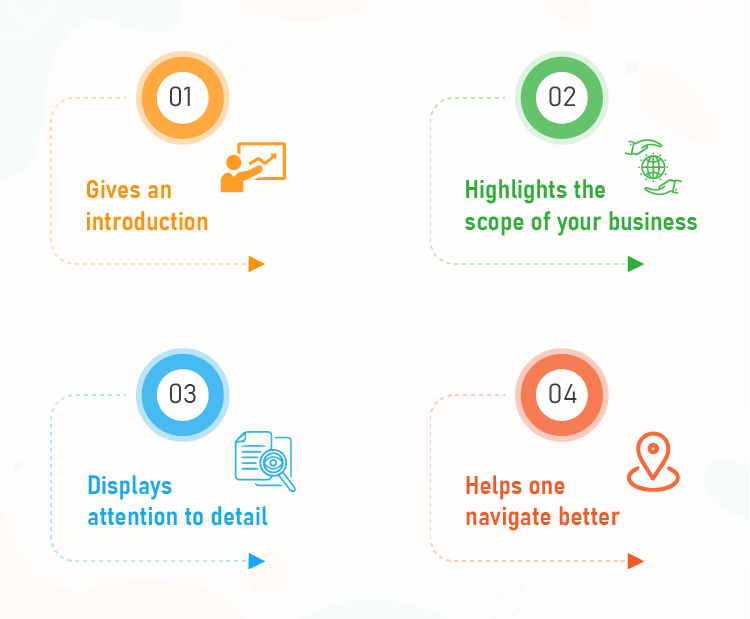Looking for how & why to write a business plan table of contents? Well, a nicely written TOC is essential for guiding readers through your plan and highlighting key sections.
It also enhances the overall professionalism and readability by setting the tone for the whole plan later. Let’s explore the sample table of contents along with the pros of adding TOC to the plan.
Why include a Business Plan Table of Contents?
A table of contents serves as the outline of a business plan. It assists the reader in navigating through the document and is placed at the beginning of a business plan. This helps the reader effortlessly find and browse through the topics that interest them.
It includes all the major sections and subcategories of a business plan. The sections are arranged logically with page numbers. And it usually precedes the executive summary.
Sample Business Plan Table of Contents
Presenting the sample business plan table of contents—your perfect partner in creating a well-organized plan. It is necessary to highlight all the necessary areas of the plan.
From below, you can even use the business plan template! It is ready for you to customize according to your needs along with the TOC!
- EXECUTIVE SUMMARY
- COMPANY OVERVIEW
- Mission Statement
- Vision Statement
- Purpose and Values
- PROBLEM ANALYSIS
- Problem Identification
- Problem Statement
- Industry Analysis
- PROPOSED SOLUTION
- Product & Service Overview
- Product & Service Specifications
- Product & Service Benefits and USPs
- Available Substitutes
- COMPETITIVE ANALYSIS
- Competitive Overview
- Direct and Indirect Competitors
- SWOT Analysis
- Competitive Position
- Market Share Analysis
- Barriers to Entry
- MARKET ANALYSIS
- Market Overview
- Market Size
- Market Segmentation
- Ideal Customer Profile
- SALES & MARKETING PLAN
- Sales & Marketing Objectives
- Pricing Strategies
- Promotion Strategies
- Branding
- OPERATIONS PLAN
- Site Location
- Staffing and Training
- Resource Allocation
- Purchasing Process
- Production Process
- Quality Control Metrics
- Customer Service
- MANAGEMENT TEAM
- Key Management
- Board of Directors
- Board of Advisors
- FINANCIAL PLAN
- Financial Overview
- Business Model
- Financial Projections
- Marketing and Personnel Expenses
- Funding Requirements
- Terms of Investment
- Exit Strategy
- APPENDICES
Benefits of Adding a Business Plan Table of Contents
A table of contents is an extremely important part of any formal document, let alone a business plan. It is the most commonly found aspect in every large format document, from books to magazines to business plans. Let’s see the benefits of a business plan table of contents:

1. Acts as an introduction
The table of contents is placed before all the sections of a business plan. This will help the reader get a good look at the contents before diving into the details. Primarily, it introduces the reader to your business plan. This can get readers interested and excited to read more.
2. Gives an overview of the scope
A table of contents further enables the reader to judge the scope of your business idea. To mirror the exact essence of your business plan, the table of contents should be crafted carefully.
Whether it’s an investor or another company you wish to partner with, any formal entity interested in your business skims through your table of contents. Hence, it is wise to convey exactly what you intend to.
3. Displays attention to detail
While creating a table of contents, you include not only the major sections of your business plan but also the subsections. These subsections will convey that you have paid attention to the smallest of things while drafting your business. This indirectly sends a message that you are serious about your business ventures.
4. Provides easier navigation
This is an obvious but very significant advantage of a table of contents. Incorporating it into your business plan will add a navigational aspect to your document. Regardless if it’s a physical document or an e-document, a table of contents will help the reader go to any specific section they want.
In the case of an e-document, you can include links to the pages. So the reader can go to a particular section by clicking on the page numbers.
Create visual appealing business plans with our
AI Business Plan Generator
Plans starting from $14/month

Build Trust in your Business with a Table of Contents
Writing a table of contents for your business plan is a subtle yet powerful way to captivate your potential investors or business partners. It is essentially a summary of the document that acts as a roadmap for your business activities.
So, whether you’re a new business seeking funding or an established business looking to refine your strategy, investing time in creating a thoughtful table of contents is a wise choice.
You can smoothen the process with the help of business planning software and get guidance for each step. So, all the very best!

